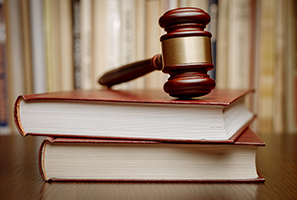The Meaning of “Causation” in a Personal Injury Case

Accidents can cause injuries. But personal injuries can be complicated things. To minimize their liability, insurance companies will often try to take advance of this fact by arguing that the injuries suffered by a car accident victim, for example, were not actually caused by the car accident.
Many people go for relaxing massages. Insurance companies, in defending personal injury claims, love to point to things like this as proof of a pre-existing injury. For example, they will often point to prior massage of lower back to say that it isn’t likely the car accident caused the victims back injury. This can be extremely frustrating for accident victims at the other end of such nonsensical positions. Ironically, it is these heavy-handed approaches of insurance company that drive accident victims to seek out the help of personal injury lawyers experienced in the area of proving causation.
Generally speaking, there are three things that an injury victim had to do to show in a claim: (1) negligence, (2) damages/harm, (3) causation – the link between the negligence and harm. This last factor cannot be overlooked. It is not enough to show that the negligent person is liable and that you have injuries. You need to show that the injuries are causally related to the negligence of the other person or entity.
The good news is that causation does not have to be proven with scientific certainty. This is good because of how complex the human body is. It is unusual for any doctor to be able to opine with scientific certainty about the precise cause of any patient’s symptoms. Sometimes is it easy; for example is one becomes paralyzed as a result of a car accident, causation will be readily established. But more often it is much more complex. This medical complexity is offset somewhat by the law in Canada.
Canadian Courts will use the “but for” test to assess causation in a personal injury case. They will make a determination of whether the injury or damages would have occurred “but for” the negligence of the other person. If an injury would have occurred regardless of the negligence, then there has been a failure to prove causation and the negligent party is not liable for the injury.
The seminal decision in Canada on causation is the Supreme Court of Canada decision in Athey v. Leonati, there the Court stated: it is not necessary now, nor has it ever been, for the Plaintiff to establish that the Defendant’s negligence was the sole cause of the injury. There will frequently be a myriad of other background events which were necessary pre-conditions to the injury occurring…As long as the Defendant is part of the cause of the injury, the Defendant is liable, even though his act alone was not enough to create the injury. There is no basis for a reduction of liable because of the existence of other pre-conditions: Defendants remain liable for all injuries caused or contributed to by their negligence…The law does not excuse the Defendant from liability merely because other causal factors for which he is not responsible also helped to produce the harm.”






















